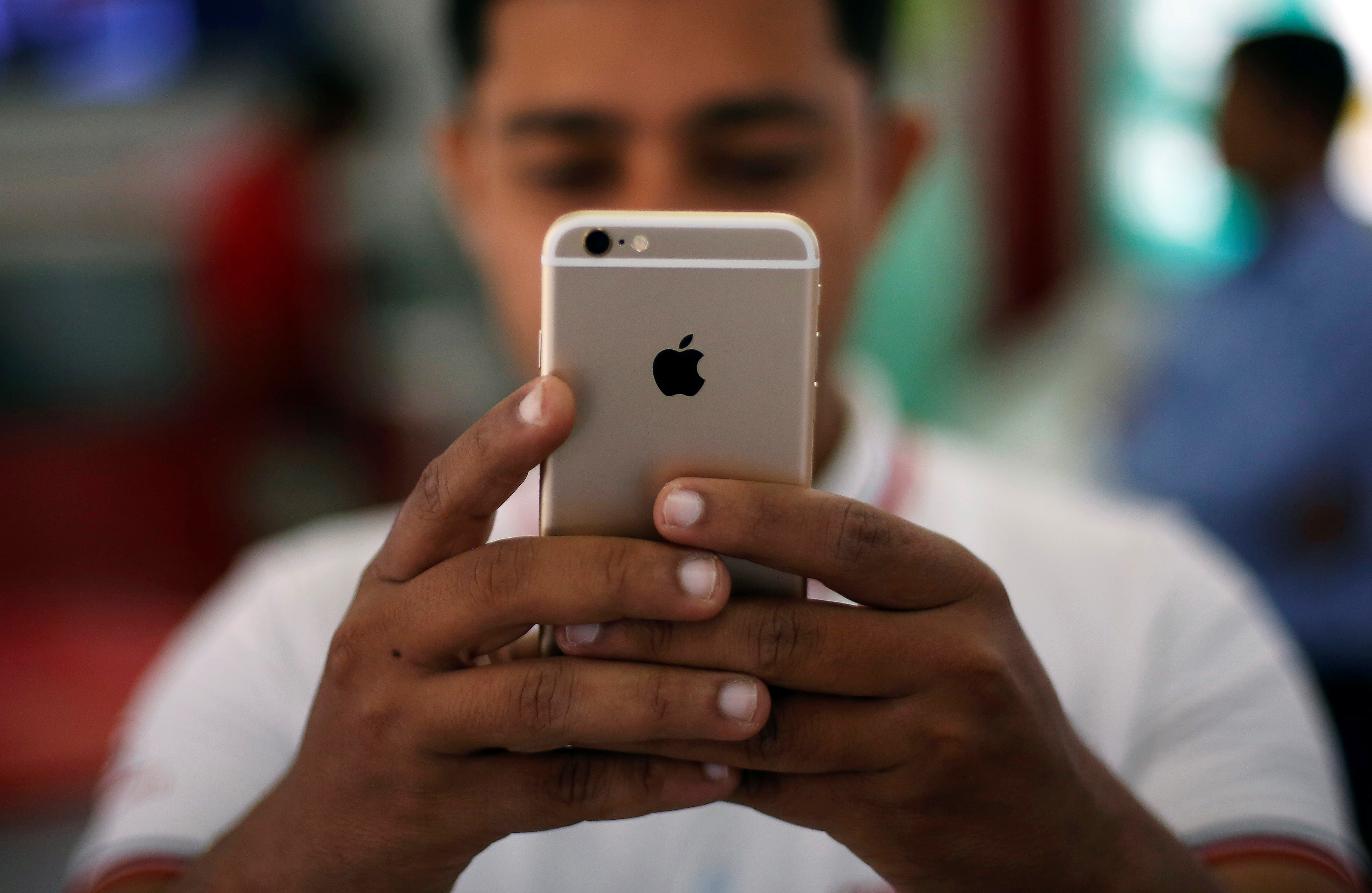Apple's India dilemma
The world's biggest rising market may force Apple to choose: Go cheap or go home


Apple's much-anticipated live-stream event later today has all the drama we've come to expect from the Silicon Valley powerhouse: A potential raft of new gizmos, showing off Apple's insistence on always one-upping itself. But behind the scenes, a much more complicated drama is playing out for the tech behemoth: Namely, Apple is running out of markets for its most successful product, the iPhone.
The company's flagship device has already saturated the markets in the U.S and Europe — and it seems well on its way to saturating the market in China, too. Experts now estimate that 80 to 90 percent of the consumers in China who can buy a high-end smartphone already have one. Growth in the country's smartphone market has slowed to a virtual standstill, along with the rest of its economy.
Of course, eventually saturating a given market is inevitable in the life cycle of any new product. But businesses don't like it, because it ends the phase when you're making money hand-over-fist by pulling in new customers. Apple's revenue in China fell 30 percent in its latest fiscal year, and Apple's total revenue declined straight through the first three quarters of 2016 — the first time that's happened in 15 years.
Subscribe to The Week
Escape your echo chamber. Get the facts behind the news, plus analysis from multiple perspectives.

Sign up for The Week's Free Newsletters
From our morning news briefing to a weekly Good News Newsletter, get the best of The Week delivered directly to your inbox.
From our morning news briefing to a weekly Good News Newsletter, get the best of The Week delivered directly to your inbox.
The rather obvious solution for Apple is to find a new market to saturate. And they may have one in India.
Like China, India boasts a massive population, one that is rising to become the world's next batch of mass consumers. Earlier this year, India actually overtook the U.S. to become the world's second-largest smartphone market, with China itself still in the lead. In all likelihood, 125 million smartphones will be sold in India this year.
In fact, iPhone sales in India grew 50 percent just in the last fiscal year. But that growth started from a very low baseline. Apple shipped 2.5 million iPhones to India from October 2015 to September 2016, which gives them 2.2 percent of the country's smartphone market. That's certainly an improvement over the 1.6 percent they had the previous year. But it's still a measly slice of the pie. By comparison, Samsung alone has one-fourth of India's smartphone market; and Micromax, an Indian electronic company, has the next biggest slice.
For Apple to grab a bigger slice of its own will be easier said than done.
Part of the challenge is just the practical stuff that comes along with entering into a new market, with its own particular structural quirks, politics, and policies. For instance, the iTunes store in India doesn't sell TV shows; the Apple map application that's available there doesn't give directions; nor is Apple Pay available. The company is working with Indian developers to solve those problems, but getting those services off the ground will take years. India also has a requirement that foreign-owned companies opening stores domestically have to get at least 30 percent of the parts and inputs to make the products they sell from Indian sources. Getting an exemption to that rule delayed Apple stores opening in India for a while. (They make pretty much all their devices in China.)
But Apple's single biggest problem is much more straightforward: cost.
Apple's cheapest iPhone in India currently starts at $600, and right now only 3 to 4 percent of India's market can afford it. By contrast, there are Android smartphones that cost less than $120, and they dominate the market.
Apple has always pursued the high-end consumer market. And the company likes to talk a big game about how its smartphones are more expensive because it chooses to focus on quality. But the fact is, concentrating on the high-end market allows Apple to keep its profit margins high. In all likelihood, Apple could produce a significantly cheaper iPhone with virtually the same quality if it wanted to. But once it introduced such a product in India, or anywhere, that would let the cat out of the bag. Other markets like China and the U.S. would expect the cheaper version, and Apple would be forced to give up its profit margins or risk losing its customer base.
There are a few other gambits Apple might attempt: They could try to get carriers in India to subsidize new iPhone purchases for customers, and thus lower the price tag that way. But most Indian consumers buy their smartphones and their carrier plans separately. And the retailers in India aren't the kind of big corporate chains that have the scale and business models to sign on to a strategy like that — they're mostly mom-and-pop shops. The best Apple has been able to do so far is get Indian internet and mobile companies like Reliance Jio to offer a free year of service to new iPhone buyers.
Apple could also try making iPhones locally in India, and cut costs that way. But they haven't been able to get those manufacturing chains off the ground yet. And the Indian government even rejected Apple's idea of selling used iPhones for cheap on the secondary market.
So Apple continues to struggle at breaking into this new market: Their iPhone shipments to India fell 33 percent in 2016's second quarter, compared to their shipments in 2015's second quarter. And this happened while all smartphone shipments to India increased 19 percent. Meanwhile, smartphones sporting Google's Android software grew to 97 percent of India's smartphone sales in 2016's second quarter — up from 90 percent a year earlier.
Pretty soon, India may force Apple to choose: Go cheap or go home.
Sign up for Today's Best Articles in your inbox
A free daily email with the biggest news stories of the day – and the best features from TheWeek.com
Jeff Spross was the economics and business correspondent at TheWeek.com. He was previously a reporter at ThinkProgress.
-
 5 streetwise cartoons about defunding PBS
5 streetwise cartoons about defunding PBSCartoons Artists take on immigrant puppets, defense spending, and more
-
 Dark chocolate macadamia cookies recipe
Dark chocolate macadamia cookies recipeThe Week Recommends These one-bowl cookies will melt in your mouth
-
 Israel's plan to occupy Gaza
Israel's plan to occupy GazaIn Depth Operation Gideon's Chariots will see Israel sending thousands of troops into Gaza later this month to seize control of the strip
-
 How do you solve a problem like Facebook?
How do you solve a problem like Facebook?The Explainer The social media giant is under intense scrutiny. But can it be reined in?
-
 Microsoft's big bid for Gen Z
Microsoft's big bid for Gen ZThe Explainer Why the software giant wants to buy TikTok
-
 Apple is about to start making laptops a lot more like phones
Apple is about to start making laptops a lot more like phonesThe Explainer A whole new era in the world of Mac
-
Why are calendar apps so awful?
The Explainer Honestly it's a wonder we manage to schedule anything at all
-
 Tesla's stock price has skyrocketed. Is there a catch?
Tesla's stock price has skyrocketed. Is there a catch?The Explainer The oddball story behind the electric car company's rapid turnaround
-
 How robocalls became America's most prevalent crime
How robocalls became America's most prevalent crimeThe Explainer Today, half of all phone calls are automated scams. Here's everything you need to know.
-
 Google's uncertain future
Google's uncertain futureThe Explainer As Larry Page and Sergey Brin officially step down, the company is at a crossroads
-
 Can Apple make VR mainstream?
Can Apple make VR mainstream?The Explainer What to think of the company's foray into augmented reality